|
||
Suggestions for additions are welcome, especially if accompanied by a photo... 
As is the case with all proper museums, these are in no particular order.. 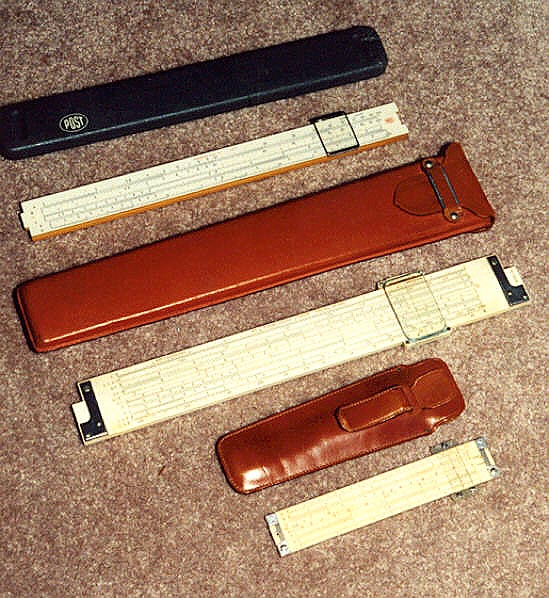
Starting in a fairly obvious place, the slide rule was the engineer's best (and sometimes only) friend until the introduction of the electronic calculator at the end of the Sixties. At top is my own bamboo Post from college; then my dad's plastic K&E, dating from 1942; and at the bottom, my favorite, a 6 inch aluminum Pickett with a leather shirt-pocket case. Yes, I DO remember how to use them.... (in the case of the Post, you tape test answers to the back, and sniff the fumes from the bamboo for a mild high...) 
I don't want to dwell on it too much, but this was the equivalent of today's cheap "credit card" calculators. My dad bought this disposable slide rule for about a quarter and kept it in his glove box to calculate his gas mileage.  Still on the subject of engineering, this was my CAD system in the 1970s. The big black thing is a Vemco drafting machine for drawing straight lines at any angle, with a set of K&E compasses nestled in its arm for drawing circles. The greenish thing toward the right is a little more esoteric: it's called an Acu-Arc, and it can draw an arc of any radius from about 7 inches to ... well, it will go all the way to a straight line, but the longest marked radius is 200 inches. 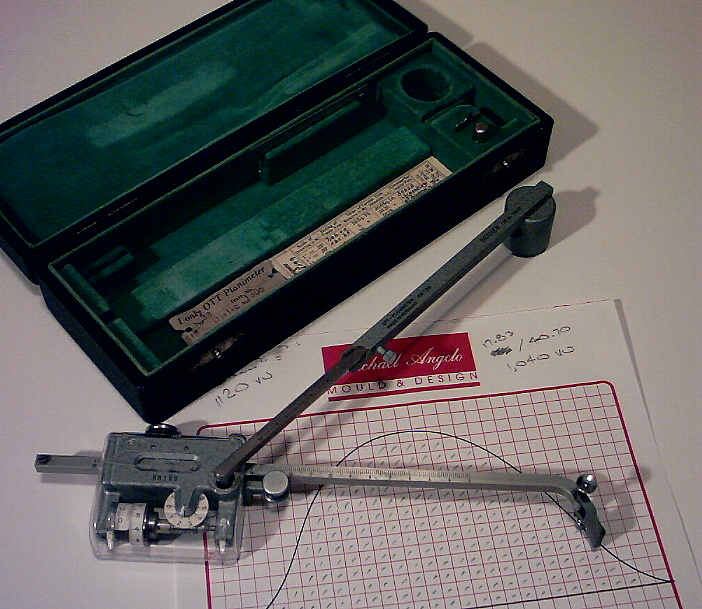
Not esoteric enough for you? Okay, how about this one: In the days before computers and CAD systems did it for you, the clever little gadget shown above enabled you to mechanically calculate the area of any enclosed shape.... even mathematically inconvenient shapes, such as land masses on a map.... simply by tracing a stylus around the perimeter. It works quite well, the mechanism is actually very simple, and I have absolutely NO idea how or why it works. (Here is a good explanation of it, though, from Scientific American) 
Okay, let's get off engineering for a while. Do you know what this is? It's a specially made precision scale for measuring the downward force on a phonograph needle. In the early 70s, this was the state of the art, and only the best turntables could operate in the 0.5 - 1.5 gram range that this covered. 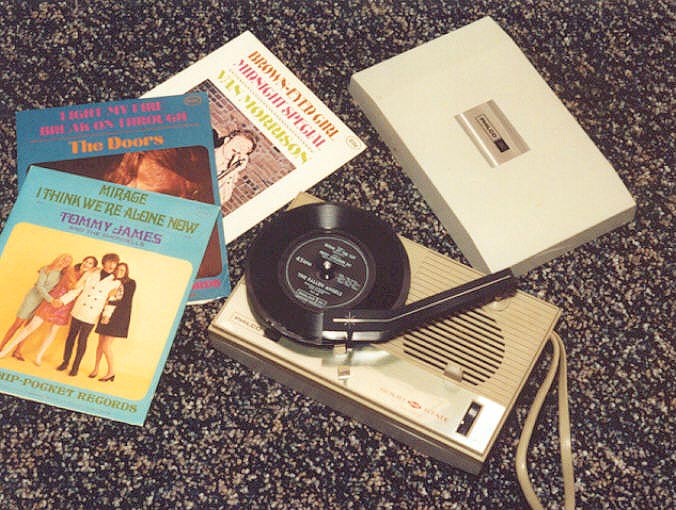
Another phonograph item: this was probably the world's first portable compact-disk player. Introduced in 1967 by Philco-Ford, "Hip-Pocket" records were less than 4 inches in diameter and flexible enough to carry in your pocket without damage. Despite available titles from a number of major artists including the Beatles, the idea was an instant flop. 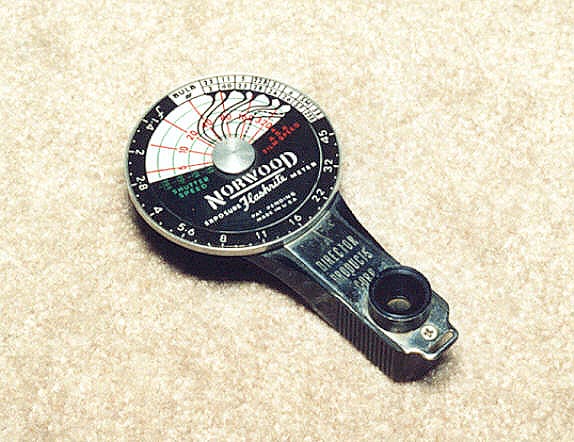
This is a totally mechanical device that was used to calculate the camera settings to obtain correct exposures with flash bulbs. The variety of different bulbs, reflectors and film speeds, in addition to the complexity of the calculation the device had to make, resulted in a very strange looking and hard-to-read indicator dial.... but if you knew how to use it, it worked. 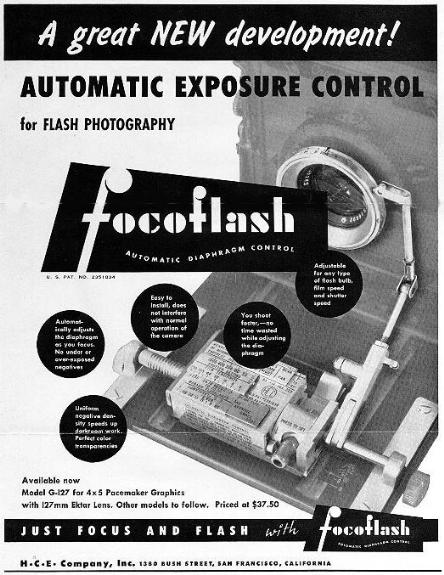
Just one more on flash photography: This clever little gadget connected the lens diaphragm to the focusing rack of a Speed Graphic camera to provide automatic exposure control with flash bulbs. It's not as obsolete as it looks; the principle was very popular with 35mm rangefinder cameras in the 1970s.... but doing it in a folding press camera was a terribly complex problem, and it resulted in a terribly complex (or maybe a complexly terrible) solution. Setting all of the scales probably took more time than just figuring out the exposure manually. (Photo courtesy of Len Williamson) 
Okay, HERE's one I bet you haven't seen before! This is a Hygrodeik, an instrument that can tell you the temperature, the humidity and the dew point all more or less at a glance... and it can keep doing it during a power failure! This one lives on the windowsill above my sister's kitchen sink (see, I'm not the ONLY strange one in the family!). 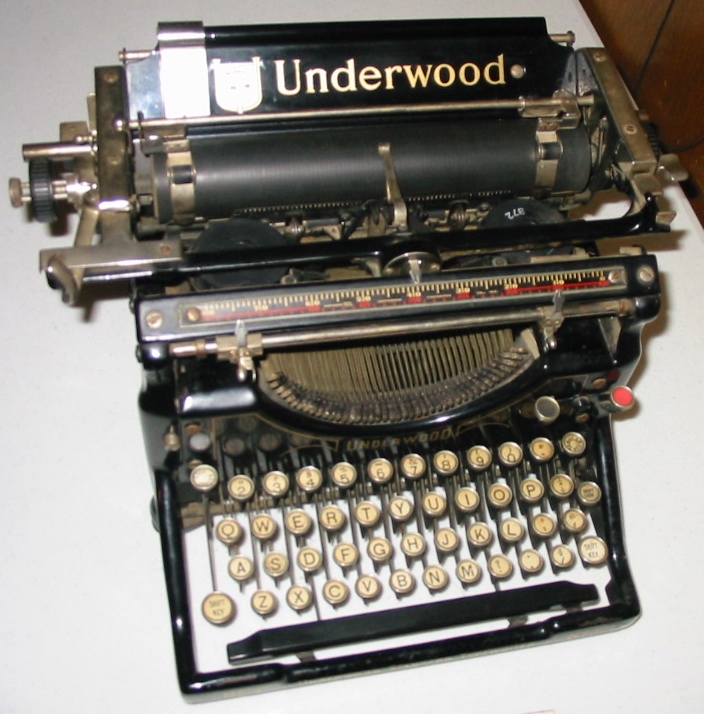
If you look at this machine closely, you may notice that the round white things with letters on them are arranged similarly to the keys on your computer keyboard. This was known as a "Typewriter": a sort of all-in-one word processor and printer that worked without electricity or cables! Instead of a "Delete" button, it came with something called an "Eraser".... (Photo courtesy of Jim Weaver) |
||
|
|
||
|
|
||
|
|
||
|
|
||
|
|
||
|
|
||
|
|
||
|
